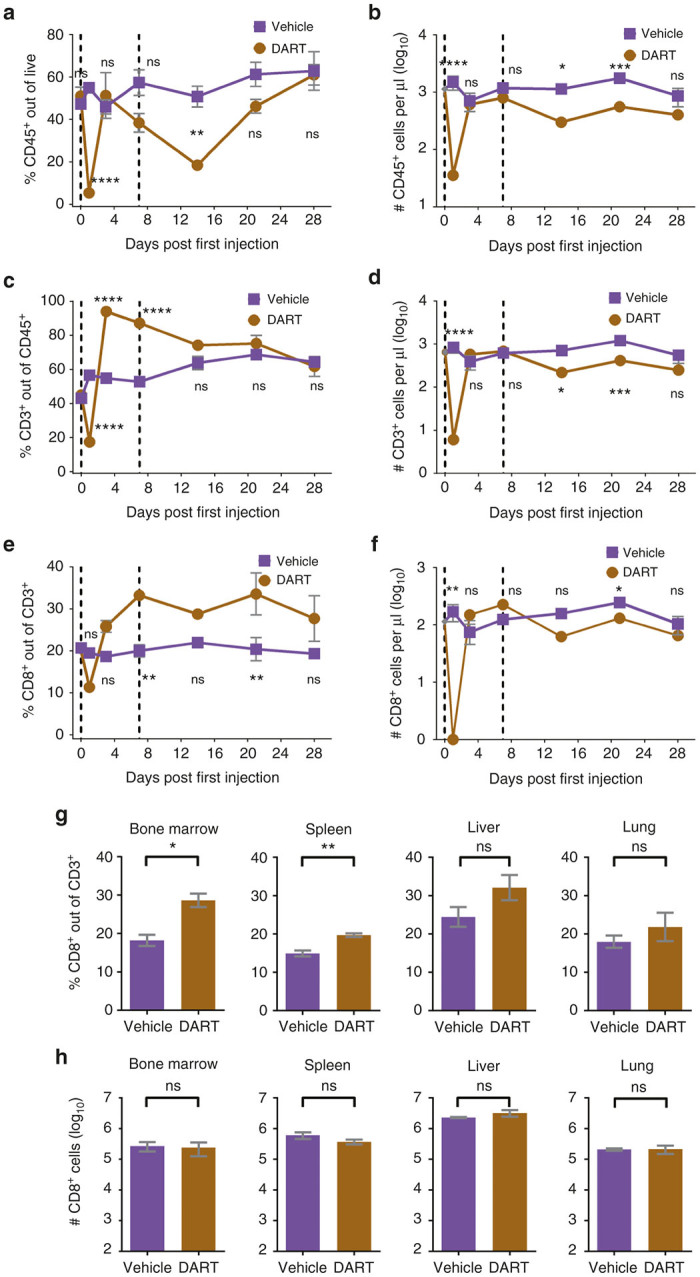Figure 4.

CD19xCD3 DART protein administration results in transient differences in the levels of human T cells in the peripheral blood of NSG/BLT mice, and over time there are no significant differences in absolute numbers of human CD8+ T cells in the peripheral blood or tissues as compared to vehicle-treated mice. NSG/BLT mice were administered CD19xCD3 (n = 3, 1 mg/kg i.v.) or vehicle (n = 3) at day 0 and day 7. Peripheral blood (PB) was collected and analyzed at days 0, 1, 3, 7, 14, 21, and 28; tissues were harvested and analyzed at day 28. (a) Percent CD45+ cells out of live cells and (b) number CD45+ cells per microliter detected in peripheral blood by flow cytometry (vehicle group in purple, CD19xCD3 group in brown). (c) Percent CD3+ cells out of CD45+ cells and (d) number CD3+ cells per microliter. (e) Percent CD8+ cells out of CD3+ cells and (f) number CD8+ cells per microliter. (g) Percent CD8+ cells out of CD3+ cells and (h) number CD8+ T cells detected in tissues by flow cytometry. (Mean ± SEM plotted. P values were calculated in a–f by repeated-measures two-way analysis of variance with Sidak’s multiple comparisons test, comparing vehicle versus CD19xCD3. P values were calculated in g and h by unpaired t-test, comparing vehicle versus CD19xCD3. ns, P > 0.05; *P < 0.05; **P < 0.01; ***P < 0.001; ****P < 0.0001. Gray diamond indicates data from age-matched NSG/BLT mice, n = 4.)
